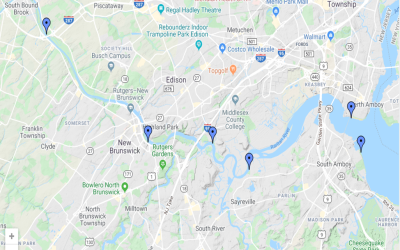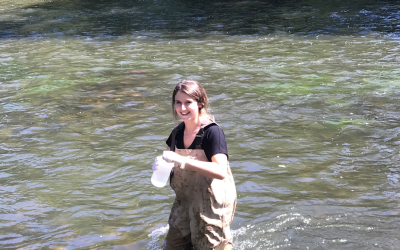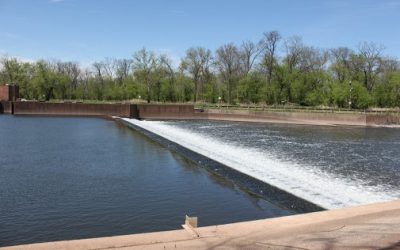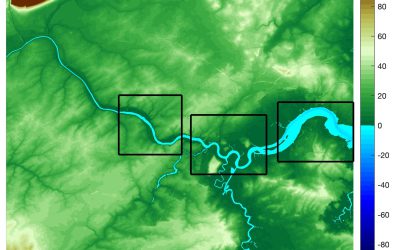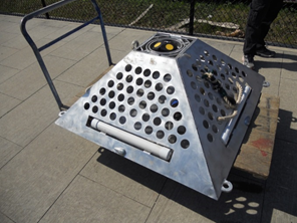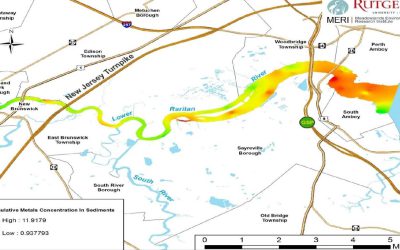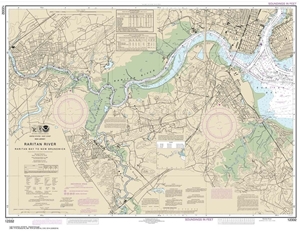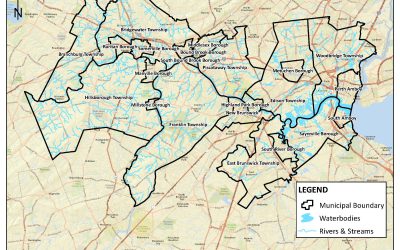
Raritan River Initiatives
The Raritan River has a rich history, which includes strong ties to Rutgers University. A number of entities from across the university are collaborating to transform the Raritan Basin into an interactive field laboratory that enhances the student experience, encourages and supports transdisciplinary research, and addresses real-world concerns of regional stakeholders.
Sustainable Raritan River Initiative (SRRI)
Rutgers University launched the Sustainable Raritan River Initiative (“SRRI”) in 2009 to bring together concerned scientists, environmentalists, engineers, businesses, community leaders and governmental entities to craft an agenda that meets the goals of the U.S. Clean Water Act to restore and preserve New Jersey’s Raritan River, its tributaries and its bay.
The Initiative, a joint program of the Edward J. Bloustein School of Planning and Public Policy (EJB) and the School of Environmental and Biological Sciences (SEBS), partners with other Rutgers schools, centers and programs to ensure the best contributions from the sciences, planning and policy. The Initiative conducts conferences and topical workshops, provides technical assistance, and develops anchor projects that raise the profile of the Raritan River. Jeanne Herb and Richard G. Lathrop, Jr., serve as co-leaders of the Sustainable Raritan River Initiative.
Rutgers Raritan River Consortium (R3C)
R3C is a collaborative effort at Rutgers University’s New Brunswick-Piscataway campus that recognizes the critical value of the Raritan and its environs to the social, economic and ecological integrity of the region that Rutgers calls home. Our mission is to utilize Rutgers’ proximity to the Raritan to inform university-based education, research and scholarship and to apply our efforts, in collaboration with Raritan partners, to advance improvements in regional planning, policy and decision-making that positively affect the ecology and economy of the Raritan region. Read more in the 2016 Public Announcement.
Johnson Family Chair in Water Resources and Watershed Ecology (JFC)
On December 15, 2015, the Rutgers Board of Governors appointed Richard G. Lathrop Jr., professor of environmental monitoring at the School of Environmental and Biological Sciences, as the inaugural holder of the Johnson Family Chair in Water Resources and Watershed Ecology.
Besides his teaching responsibilities, Lathrop, a professor in the Department of Ecology, Evolution and Natural Resources, is the faculty director of the Rutgers Ecological Preserve. over 350 acres, the preserve features several streams that feed into the Raritan River and numerous public hiking and biking trails. He also directs the Grant F. Walton Center for Remote Sensing and Spatial Analysis, whose mission is to promote the development and application of geospatial information science and technology to address issues in the environment, natural resources and agriculture.
For more information, contact Rick Lathrop at lathrop@crssa.rutgers.edu or (848) 932-1580.
Resources & Updates
Development of a Volunteer Science Pathogen Monitoring Program on the Lower Raritan River
Little water quality data exists that can inform the safety of recreating on the highly urbanized Lower Raritan River. The Lower Raritan is actively used for fishing, paddling, catching bait fish, crabbing, jet skiing, wading and even swimming on a hot day, yet...
Opportunistic pathogens in the Raritan and the homes of people drinking the river
The burden of non-tuberculosis mycobacterium (NTM) infections on the US healthcare systems is estimated to cost $815 million annually. NTM causes chronic lung infections most commonly in older, immunocompromised, and cystic fibrosis patients. NTM can by-pass...
Quantifying the Presence and Abundance of Freshwater and Euryhaline Bivalves in the Raritan River
There is very little information on the density and or the species of bivalve mollusks present in the watershed of the Raritan River basin. The work that was conducted involved examining the presence or absence of bivalve mollusks from the mouth of the Raritan River...
Environmental DNA (eDNA) Assay for Monitoring Recovery of River Herring
Mid-Atlantic populations of river herring (Alosa pseudoharengus, alewife, and A. aestivalis, blueback herring) have declined precipitously in recent years. River herring are listed as “Species of Special Concern” by the National Marine Fisheries Service. With over...
Generating an Elevation Grid for the Raritan River Basin
The objective of this project was to develop an elevation/bathymetry grid for the Raritan River Basin as a precursor for a hydrodynamic model. In addition, by identifying data gaps the project provides guidance on future side-scan sonar surveys of the river....
Real-Time Hydrological Observatory and ERDDAP Interface
A real-time water quality monitoring station has been deployed on the bottom of the Raritan River in the mid-channel in front of the Rutgers Class of 1914 Boathouse (at approximately Lat/Long 40.488960, -74.33184). YSI/Xylem EXO2 Sonde sensors include: conductivity,...
MERI – Spatial Distribution of Contaminants in Lower Raritan Sediments
This research study by the Meadowlands Environmental Research Institute (MERI) at Rutgers - Newark, aimed to fill in data gaps in river and marsh sediment contamination in the Lower Raritan River. The main tasks of this study were: (1) Measure trace metal and organic...
ArcGIS StoryMaps of Key Raritan Indicators
Key Raritan Indicators described through ArcGIS StoryMaps by Advanced Environmental Geomatics Students In the Spring of 2019, undergraduate students in Dr. Richard Lathrop's Advanced Environmental Geomatics course developed ArcGIS StoryMaps for key indicators...
EPA Rutgers Raritan Data Project
The EPA Rutgers Raritan River Project was conducted to compile data related to point source and non-point source pollution and Superfund, Brownfield and other contaminated sites into a comprehensive database. In addition, the project developed an interactive tool that...
